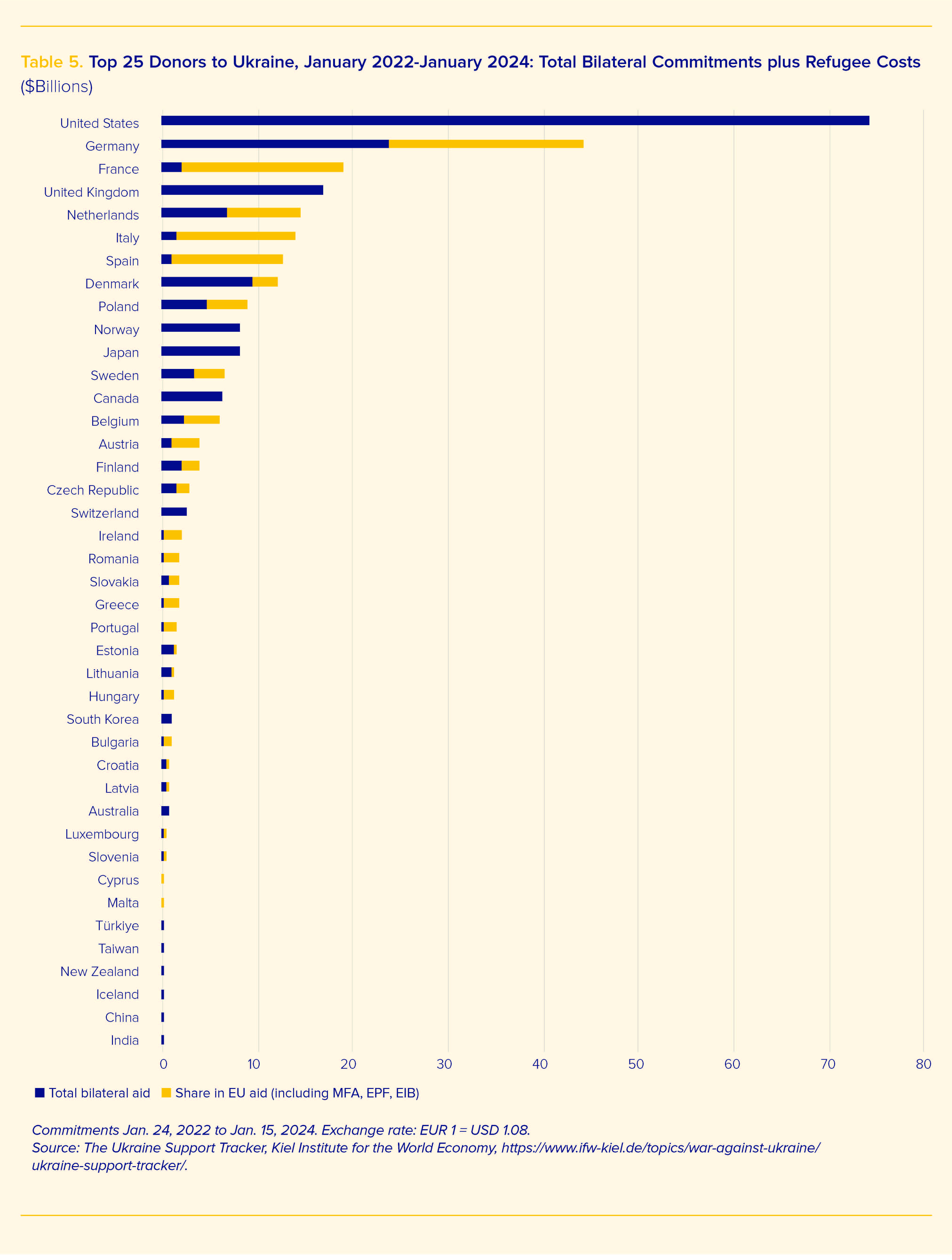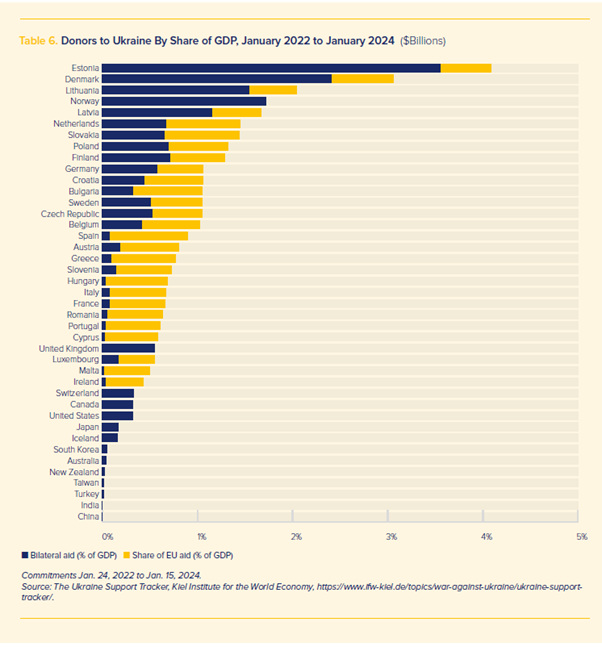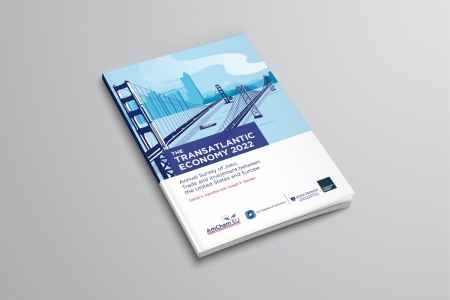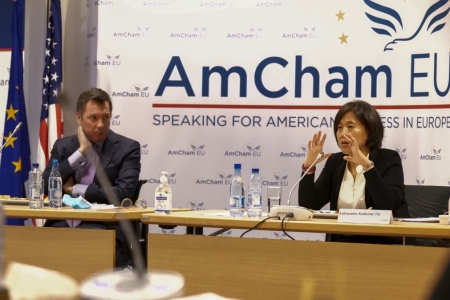Russia’s ongoing aggression against Ukraine has not only devastated Ukraine and resulted in hundreds of thousands dead or injured, it has amplified global financial instabilities and supply chain distortions, wreaked havoc on food and energy markets, and generated the largest refugee crisis in Europe since World War II.
The transatlantic partners have spearheaded international efforts to support Ukraine. EU member states and EU institutions combined committed $153.8 billion between January 24, 2022 and January 15, 2024, according to the Kiel Institute for the World Economy. The United States has been the single largest country donor, with commitments of $74.2 billion. Other donor countries have committed an additional $43.4 billion. In addition, in March 2023 the IMF approved a $15.6 billion extended fund facility (EFF) program as part of a $115 billion support package. This includes structural reforms aimed at preparing the country for EU membership.
If contributions via EU channels are reapportioned to the individual EU states that provided them, then the U.S. remains the largest individual donor ($74.2 billion), followed by Germany ($44.28 billion) (Table 5). In terms of bilateral commitments in percent of donor country GDP, the top five donors are Estonia, Denmark, Lithuania, Norway, and Latvia (Table 6).
European assistance continues. On February 1, the EU approved a Ukraine economic support package of up to $54 billion, to be allocated between 2024 and 2027 to support Ukrainian resilience and reconstruction, budgetary and financial assistance, and EU accession support. The package amounts to $13.6 billion in annual support. The EU and its member states have allocated a total of $82.2 billion to Ukraine’s support, they have established a $22 billion common fund known as the “Ukraine Facility” economic assistance package, and they’ve created a “European Peace Facility” to reimburse member states for bilateral military support they would provide to Ukraine over the next four years.
Since Russia’s full-scale invasion of Ukraine in February 2022, more than 10 million Ukrainians have fled their homes, 6.4 million of whom left the country. Six million are hosted in countries across Europe, and another 400,000 outside of Europe, primarily in Canada and the United States. As of November 2023, the main EU countries hosting beneficiaries of temporary protection from Ukraine were Germany (1.236 million people), Poland (955,000) and Czechia (369,000).
When the Kiel Institute adds estimated refugee costs to bilateral support levels, the United States remains in first place ($77.23 billion), followed by Germany ($46.46 billion, including $22.90 billion in refugee costs) and then Poland, the UK, and Denmark.
Alongside the efforts of governments and the EU, many U.S. companies are actively involved in assisting the Ukrainian government and civil society, in humanitarian actions, in supporting recovery and reconstruction. Advanced U.S. military technology and munitions are also being deployed in the battlefield, and U.S. military contractors are supplying an increasing number of arms and munitions to refill stocks amongst donor countries.
The strong transatlantic collaboration thus far on supporting Ukraine should serve as an example of how the EU and U.S. can cooperate effectively along all dimensions of the relationship. While there is a cost to the financial and military support provided, it is the Ukrainian people who is paying the most significant price in this conflict. A definitive Russian defeat in this conflict would ensure that such conflicts are not allowed to expand to directly affect the U.S. and its allies. If allowed to do so, the costs would by far exceed the support we provide Ukraine today.


This piece is part of a series of blogs that explore the findings of the 2024 Transatlantic Economy Report. Read more here.



